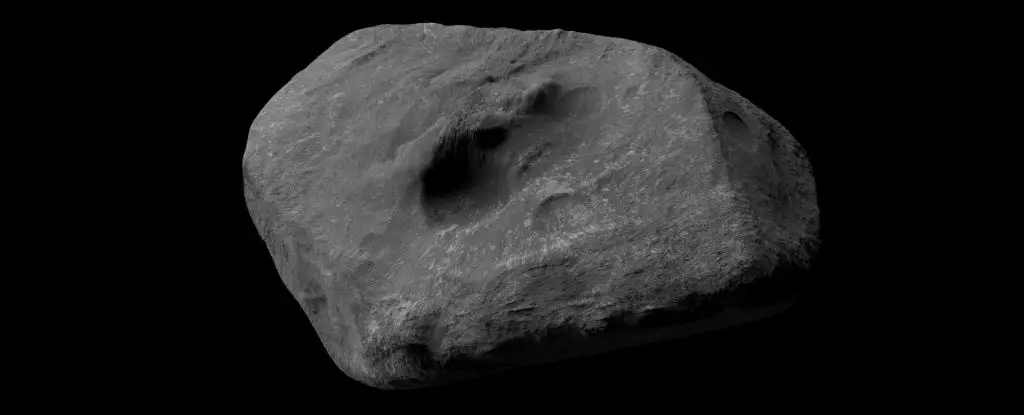The heavens never cease to amaze us, and when asteroid 2024 YR4 emerged into our telescopic view on December 27, 2024, it felt like a cosmic revelation. Its sudden appearance prompted an immediate wave of curiosity and concern within the astronomical community and beyond. However, while it may have seemed to materialize from thin air, this asteroid’s origins trace back to the dense heart of the main asteroid belt found between Mars and Jupiter. The classic narrative of how orbits and gravitational forces shape our celestial neighborhood reminds us that there’s much more than meets the eye when it comes to cosmic inhabitants.
Astrophysicist Bryce Bolin of Eureka Scientific noted the surprising origins of 2024 YR4, stating that its position in the central asteroid belt was unexpected for Earth-crossing asteroids. This reveals an underlying truth about our Solar System: it’s a dynamic and interconnected system, where asteroids can be nudged out of their ancient trajectories, potentially altering their paths toward Earth. Such occurrences not only challenge our current understanding but also demand advanced monitoring of potentially hazardous near-Earth objects (NEOs).
The Threat Level: High but Manageable
Initial observations of 2024 YR4 raised alarm bells regarding a possible future collision with Earth. Fortunately, further studies have clarified that during its current trajectory, the threat is negligible—a reassuring conclusion for a world all too familiar with the catastrophic potential of asteroid impacts. The term “city killer,” often associated with asteroids of this size, illustrates the inherent dangers posed should a collision occur, despite the low probability on the upcoming pass in 2032.
Indeed, this asteroid is not just another speck of rock; it encapsulates the biggest fears and fascinations surrounding planetary defense. Understanding the dimensions, orbital mechanics, and physical characteristics of such asteroids prepares us for the unlikely but serious prospect of impact events. Research efforts have shifted focus, honing in on asteroid dynamics to develop strategies for mitigation, should a future threat arise.
Deciphering Composition and Structure
What sets 2024 YR4 apart from so many other known asteroids is its distinct composition and structural integrity. Utilizing advanced observational tools such as the W.M. Keck and Gemini South telescopes, researchers have gleaned vital information about this marvelous rock. Its retrograde rotation, rapid spin, and unique flattened shape—akin to a hockey puck—provide key insights into how it might have formed.
Identifying the asteroid’s density as similar to solid rock points towards its classification as an S-type asteroid, unlike the less consolidated, carbonaceous varieties that have become famous for their loose structures. This distinction is not merely academic; it is crucial for determining how we might respond to a potential threat. Rich in silica, 2024 YR4 embodies a sturdiness that maps onto the strategies we would employ should a deflection mission be necessary.
Additionally, the asteroid’s unusual flattened shape raises intriguing questions. Why does it defy the common potato-like configuration seen in many other asteroids? This anomaly can unlock new understanding of the forces that shaped it over billions of years, enhancing our knowledge of similar objects throughout the Solar System.
Looking Ahead: The Future of Planetary Defense
The discovery of 2024 YR4 is not merely a fleeting moment of scientific achievement; it signifies a call to action for planetary defense initiatives. It underscores the importance of proactive observation and analysis, equipping scientists with the knowledge necessary to mitigate the risks posed by potentially hazardous asteroids. As more asteroids appear to have formed from unimpressive beginnings and subsequently evolve into threats, targeted and swift responses will become critical.
Furthermore, the lessons learned from 2024 YR4 promise to refine rapid-response techniques. Future NEO encounters may demand quick observations and assessments, particularly for those that seemingly emerge out of nowhere. Astrophysicists are excited to see if 2024 YR4 will evade danger or enter a more precarious trajectory, particularly with the Moon also catching flak from this heavy-duty space rock.
With this backdrop, our collective vigilance and curiosity about asteroids like 2024 YR4 serve a larger purpose, urging us to delve deeper into understanding our celestial neighbors and enhancing the safety measures we adopt in facing potential threats. The cosmic dance of asteroids is a reminder of our vulnerabilities and responsibilities as stewards of Earth’s future.


Leave a Reply